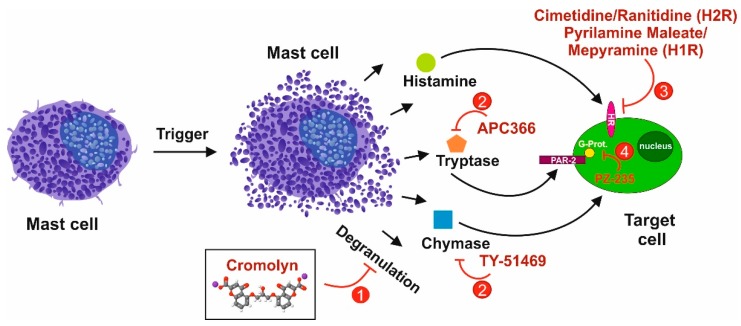Figure 2.
Regulation of mast cell (MC) effector functions. Upon liver damage, MCs increase in the liver tissue and degranulation is triggered by environmental factors. The released MC effectors modulate target cell functions in receptive cells, such as hepatic stellate cells, portal myofibroblasts, and cholangiocytes. There are several possible ways to interfere with MC effector functions: (1) MC stabilizers like cromolyn block the general release of MC granula, and inhibitors can inactivate liberated (2) proteases, (3) block different types of histamine receptors, or (4) can modulate downstream signaling in target cells. Abbreviations used are: APC366, N-(1-hydroxy-2-naphthoyl)-L-arginyl-L-prolinamide; G-Prot., G protein; HR, histamine receptor; H1R, histamine receptor H1; H2R, histamine receptor H2; PAR-2, protease-activator receptor-2; PZ-235, P2pal-18S cell-penetrating pepducin targeting the intracellular i3 loop of PAR-2; TY-51469, 2-[4-[(5-fluoro-3-methyl-1-benzothiophen-2-yl)sulfonylamino]-3-methylsulfonylphenyl]-1,3-thiazole-4-carboxylic acid.

